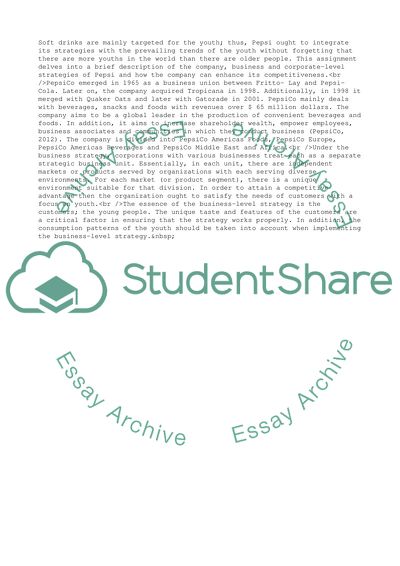Cite this document
(PepsiCo Business-Level and Corporate-Level Strategies Coursework Example | Topics and Well Written Essays - 1500 words, n.d.)
PepsiCo Business-Level and Corporate-Level Strategies Coursework Example | Topics and Well Written Essays - 1500 words. https://studentshare.org/business/1780020-business-level-and-corporate-level-strategies
PepsiCo Business-Level and Corporate-Level Strategies Coursework Example | Topics and Well Written Essays - 1500 words. https://studentshare.org/business/1780020-business-level-and-corporate-level-strategies
(PepsiCo Business-Level and Corporate-Level Strategies Coursework Example | Topics and Well Written Essays - 1500 Words)
PepsiCo Business-Level and Corporate-Level Strategies Coursework Example | Topics and Well Written Essays - 1500 Words. https://studentshare.org/business/1780020-business-level-and-corporate-level-strategies.
PepsiCo Business-Level and Corporate-Level Strategies Coursework Example | Topics and Well Written Essays - 1500 Words. https://studentshare.org/business/1780020-business-level-and-corporate-level-strategies.
“PepsiCo Business-Level and Corporate-Level Strategies Coursework Example | Topics and Well Written Essays - 1500 Words”. https://studentshare.org/business/1780020-business-level-and-corporate-level-strategies.


